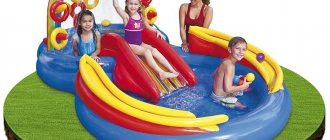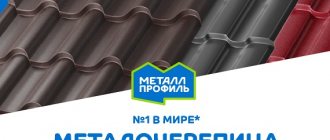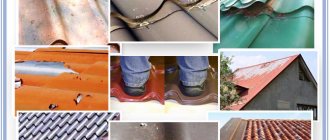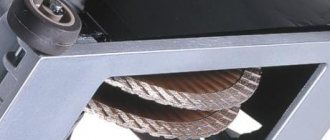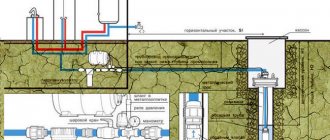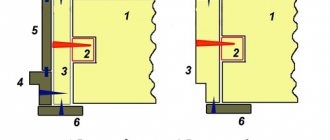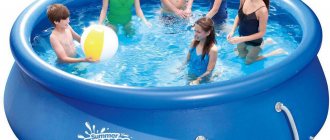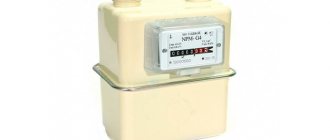Installation of toilet cabins
A stationary outdoor dry closet consists of a base to which three walls and a front panel with a hinged door are attached. The structure has a roof on top.
The walls and all components are made of durable plastic that is resistant to mechanical damage and fire. The material used for the manufacture of dry toilets tolerates temperature changes well, is not destroyed by exposure to sunlight and is resistant to aggressive chemicals. It is not afraid of corrosion, it is easy to clean and does not require regular touch-up.
Inside the cabin there is a toilet equipped with a tight-fitting lid. Underneath there is a storage tank into which waste falls. This tank is particularly durable and resistant to active chemical liquids, which break down all impurities in it. Ventilation is provided inside the cabin, allowing unpleasant odors and harmful fumes to escape outside.
What to pay attention to
When buying a dry closet for an apartment without a sewer system, you must first consider its functionality. Required options:
- flush unit. The most effective models are those with double-sided flushing, where the entire area of the bowl is completely washed;
- pressure valve. Eliminates water splashing;
- storage tank loading indicator, notifying about cleaning time;
- storage volume. The more people use the dry closet, the larger the tank is needed;
- dimensions. It is necessary to think in advance whether it will have to be transported in a car, or installed in a cramped room;
- connection to the sewerage system in the house.
A controversial type of design has become a dry closet with a sewer connection. If it exists, it is easier to build a normal bathroom and not use intermediate devices. However, many owners use this method to reduce the volume of wastewater in a septic tank or cesspool. This allows you to increase the interval between pumping out the tank.
Comfortable life outside the city and its arrangement
Have you ever thought about what state the Earth will remain in for future generations? This question is by no means idle. After all, all the wastewater that enters the soil causes irreparable harm to nature. It was this problem that prompted the owners of country houses to arrange their own lives using such modern equipment as:
- Dry toilets;
- Septic tanks;
- Pumps.
We will tell you about each of these devices that allow you to create comfortable living conditions on the pages of this site.
Country cottages and country houses need to be equipped with sanitary rooms. And an indispensable attribute of such a room is plumbing. However, it is not always possible to use a regular toilet, and in this case a dry closet may be an ideal option.
They are produced in different types:
- Peat;
- Chemical.
A modern metropolis occupies a vast territory and its residents do not always manage to organize their lives in such a way that everything is within walking distance. The need to move from one area of the city to another often forces you to use a public toilet. Today they are used as toilet stalls. Although they find application outside the city with no less success:
- In villages;
- At the dachas.
The convenience of such equipment is undeniable. It helps to avoid eternal unpleasant odors, allows you to maintain cleanliness in the city and is indispensable during various cultural and social events.
What is it and what types are there?
A dry toilet is a kind of toilet with a container located below, where human waste products fall. There they decompose or are neutralized under the influence of certain factors. Decomposition can occur using:
Accordingly, dry toilets can be depending on the operating mechanism
- peat,
- chemical
- or electric.
Expert opinion Kuznetsov Vasily Stepanovich
The dry closet is quite compact, which allows it to be installed inside a country house or even transported from place to place.
Let's take a closer look at each of the types of toilets.
Peat
A peat dry closet uses peat to absorb feces. Most models are filled with it using a special dispenser, which is a kind of funnel. Peat is placed in the dispenser, and then its handle is rotated, alternately changing direction so that the substance evenly covers the bottom of the device’s container.
The main advantage of toilets of this type is the low cost of their operation. 150 - 200 liters of peat can be bought for approximately 500 rubles. This volume of substance will last for a very long time - a year or even more. In addition, there is peat specifically designed for dry closets. It is impregnated with substances that help break down feces and absorb unpleasant odors. Such peat will cost a little more.
Spent peat removed from the toilet can be used as fertilizer in the garden - after all, during the absorption of feces by peat, the process of their aerobic mineralization occurs (in other words, they are partially converted into inorganic substances needed by plants). Before applying fertilizer to the soil, it is better to mix it with the soil. This will help avoid chemical burns to plants - human excrement can be dangerous for them.
However, peat dry closets also have a number of disadvantages:
- Peat does not completely absorb odor. If the toilet is located on the street or in a utility room, there is nothing wrong with that. But if it is located in a residential building, ventilation of the device’s container is required. To do this, a special plastic tube is taken out of the container and goes outside. However, even this is not able to completely eliminate the unpleasant odor.
- Peat is not able to absorb urine. Therefore, it is also necessary to drain it from the peat toilet. Or just don't pee in it.
Expert opinion Kuznetsov Vasily Stepanovich
Some models of peat toilets have a separate container for collecting urine, which greatly simplifies their use.
I recommend paying attention to them if you decide to buy this type of dry closet.
Chemical
In a chemical dry closet, waste is processed using special chemicals. For this purpose, devices of this type have not only a container for collecting waste products, but also a small tank for processing feces substances.
It is located at the top of the toilet and has a small electric pump (in cheaper versions, a manual pump) that supplies the reagent to the lower section.
Unlike peat, chemical reagents can also process urine. In addition, they eliminate unpleasant odors much better.
Not all waste digesters are good at controlling odors. Some do not eliminate them completely. Before purchasing a reagent, consult with the seller and find out how effective it is in this regard.
In terms of costs, a chemical toilet is not as economical as a peat toilet. A liter bottle of solvent costs an average of 500 rubles. It must be dissolved in water at the rate of 20 - 30 ml per 1-2 liters of water (this amount is enough for 2-3 flushes). Thus, the reagent will be enough for approximately 30-40 single uses, that is, 60-80 flushes. However, do not forget that the reagent is much better at fighting unpleasant odors and is able to process urine.
Electric
An electric composting toilet works by drying feces using electricity. As a result of processing, they turn into dry fractions. Urine is not processed. It is collected in a separate container provided in most devices. However, some toilets do not have it, which requires drainage of liquid waste.
An electric toilet wastes a lot of energy because the heating element reaches high temperatures. The device itself is also not cheap - prices start at 10,000 rubles. In addition, it is necessary to organize ventilation - after all, the smell is also not eliminated in any way.
As in the case of a peat dry toilet, waste from an electric one can be used as fertilizer by adding to compost.
Electric composting toilets
An electric dry closet needs to be connected to the mains. Outwardly, it is very similar to a regular toilet. The lower tank of electric models is divided into two parts.
Liquid waste accumulates in one part, which is drained into a special pit or into the soil using drainage. And in the second part of the tank there is solid waste. The compressor dries the solid waste located in the second part of the lower tank.
After drying, the tank is emptied. It is not entirely correct to call this operating principle composting. This name appeared because if dried waste is placed in a compost pit, covered with soil and watered periodically, compost will form in two years.
The Swedish dry closet Separett Villa has a standard design of two lower tanks. Solid waste is dried and odors are removed by forced ventilation. The main disadvantage of this model is that it can only be used in a sitting position.
The fact is that the toilet is equipped with a special mechanism that opens the lower tank only under the influence of the gravity of the human body.
But another Swedish dry toilet, Mulltoa, works completely differently. This model has a common tank. Liquid and solid waste are mixed with the peat mixture and heated. Intensive mixing and optimal temperature promote rapid growth of bacteria that process waste into compost.
The finished fertilizer is poured into a special tray. This compost is already completely ready for use.
When choosing a dry closet for your dacha, you need to weigh all the pros and cons. Any type of toilet requires certain consumables to operate: peat, waste treatment liquid or electricity. You also need special toilet paper.
Not only the type of product, seat height and tank volume are important. It is necessary to take into account such important nuances as the flushing mechanism, the need for ventilation or drainage. In order for using the restroom to bring only positive emotions when choosing and purchasing a product, you need to try it out and learn all the intricacies.
In addition, dry toilets are quite expensive. The simplest model of a liquid toilet will cost about 100 USD. That is, and the Swedish electric miracle toilet Mulltoa costs a fortune - 1500 USD. e. Therefore, when deciding to buy a dry closet, you need to carefully weigh the pros and cons.
After purchasing and installing a dry closet, you must follow the rules for operating the product, empty the tank on time and replenish the active substance (peat, waste disposal liquid). If you follow all the rules, a dry closet will make living at your dacha comfortable and enjoyable.
Dry toilets: frequently asked questions
Are you planning to buy a dry toilet, but don’t know which one to choose? Do you have questions regarding the operation of the device? Want to know where to dispose of your waste?
Here we provide answers to frequently asked questions.
What criteria should you follow when choosing a dry closet? How to choose a toilet for a large family?
The main thing you need to pay attention to is the volume of the lower tank. If the device will be used by only one person, it is enough to purchase a portable dry toilet with a lower tank volume of 10-15 liters. If the dry closet is intended for a family of three, then the volume of the lower tank should be at least 20 liters. The tank will need to be cleaned every three days. If the dry closet is used by 5 or 7 people, the tank will need to be cleaned every other day.
How to keep a dry closet clean?
Operating a dry closet involves using special liquids for the upper and lower tanks. They dissolve waste, destroy bacteria and deodorize the air, and in addition, reduce water consumption. To clean and whiten the external parts of a dry closet, there is a cleaning product called Bathroom cleaner. Easily soluble paper for dry toilets Aqua Soft will help prevent clogging.
How much is one bottle of liquid for a dry toilet?
1 liter bottles are designed for 10 refills, and 1.5 liter bottles are designed for 12 refills. If you change the water in the tank every three days, then 1 liter of liquid will be enough for about a month.
Is it really necessary to purchase two bottles - for the upper and lower tanks, maybe one will be enough?
It is advisable not to use liquid for the upper tank in the lower tank and vice versa. The fact is that each product performs a strictly defined function: liquid for the upper tank is necessary to improve drainage, and liquid for the lower tank is necessary to break down waste.
How are granules different from liquid tank cleaners? What's better?
In fact, nothing. Release form only. They dissolve waste equally well, eliminate unpleasant odors and simplify washing the bottom tank of the dry closet. One bag of granules is designed for 10 refills.
Is it possible to leave a dry closet in an unheated room in winter?
Yes. The dry closet is made of durable, frost-resistant plastic and can easily “overwinter” in a room with sub-zero temperatures. In addition, liquids for dry closets do not freeze at temperatures down to –20 degrees. In severe frosts they freeze, but after defrosting they do not lose their properties. However, if the dry closet is not used in winter, it is advisable to drain all the water from the tanks.
Can chemical toilet liquids cause allergies? How safe are they?
Liquids for dry toilets are absolutely safe for humans, they do not emit harmful fumes, do not irritate the skin and do not cause allergic reactions.
Where to dispose of waste?
Waste is discharged into a drain or sewer. But if you use “green” liquids labeled “natural” in the bottom tank, then the waste can be composted.
Source: www.domvelesa.ru
Installation of a dry toilet
The simplest option is to purchase a portable chemical toilet with replaceable cassettes. You will need to insert the cassette or fill the reservoir with concentrate and select a suitable location for the toilet.
The location can be chosen based on personal preference, since there is no need to be tied to a cesspool. In addition, you don’t have to worry about groundwater contamination (with the exception of portable toilet models with chemical filler). The smell will be present, but not strong, but barely perceptible - this is a completely natural process. If you do everything according to the rules, then you can install a dry closet at home, only then you need to take care of the ventilation and drainage system. Taking into account all these nuances, you can choose a suitable location and begin installation.
How to install a dry closet at your dacha:
- If you have chosen a portable toilet with cassettes (cleaning with chemicals), then you need to remove the protective film from the toilet and assemble the structure.
- You need to insert a cassette with liquid or pour liquid concentrate into a special compartment, snap the lid on and place the upper bowl with the lid.
- Don't forget to check how the toilet works in action.
- If you are satisfied with everything, you can install the portable toilet in a permanent place.
- Do a test rinse. The waste should move to the lower storage tank.
- When the tank is full, you need to remove it and press the reset button (the pressure will drop and the tank will be empty of its contents).
- Then you need to wash the container and fill it with water again, add the biological product.
- If you bought a dry toilet with a volume of 12 liters, it means that after approximately 35 visits (for 1 person this is a week of visits), you need to clean the tank; a tank volume of 21 liters is enough for 70 visits (2 weeks of use).
- There are models equipped with a tank full indicator and a pump for convenient operation.
If you want to tinker a little, you can make a peat biotoilet yourself. You need to prepare all the materials and you can start working.
What you will need:
- plastic or metal container for peat;
- seat (toilet, container or bucket);
- dry peat;
- compost pit.
To make it more convenient to use the toilet, you can place a bucket of peat next to the toilet and add a new portion of the filler after each visit. Before using the toilet for the first time, you need to pour a little peat into the bottom of the container, then the feces will be cleaned well and quickly.
The design of the dry closet is simple: you need to install a bucket or other suitable container, pour a little peat mixture into it, install a toilet seat on top and attach a lid. Now you can use the dry closet. As soon as the bucket is full, the mixture should be poured into the compost pit.
Dry toilet for a summer residence. Video:
Manufacturers of dry toilets and popular models
Each segment of the dry toilet market has its own leaders, whose products stand out for their high quality, perfect design and aesthetic appearance. In the niche of chemical options, the Dutch company Thetford stands out, under whose license Chinese manufacturers operate.
For example, the Thetford Qube 365 dry closet is portable and has compact dimensions of 41.3x38.4x42.6 cm. It can simply be pushed under the bed. The upper tank is designed for 15.1 liters, the lower – for 21.2 liters. The distance from the floor to the seat is about 41 cm. In all respects, it is suitable for the disabled and the elderly.
There are other modifications that differ in tank capacity and the presence of additional options: Thetford Porta Potti Qube 165, Thetford Porta Potti 165 Luxe, Thetford Porta Potti Qube145, Thetford Porta Potti 565E, Thetford Campa Potti QubeXG, Thetford Porta Potti XGL, Thetford Porta Potti Qube 345, Thetford Porta Potti Excelence Electric, Thetford Porta Potti 565P.
For example, the Qube 145 model rises only 32.5 cm, which is great for children and short people.
The Qube 345 is compact, features a piston pump and other technical improvements. May be needed on vacation with tents, hunting, fishing, at remote security posts, while traveling
The Qube 565E model is intended for more affluent users, has a modern design, filling indicators on both the upper and lower tanks, and is equipped with an electric pump.
Other models use two types of pumps: bellows and piston. The bellows is simpler in design and is activated by pressing an “accordion” made of thin plastic. You can repair it yourself if necessary. To repair a piston pump, you must seek the help of a specialist.
To start this pump, you need to press the piston rod several times. The harder you press, the more water goes to drain. This is important, especially for patients with cardiovascular diseases. During the acute period, any physical effort is not allowed for them. Therefore, in this case, it is preferable to use a device with a bellows-type pump.
Chemical portable liquid dry closets have proven themselves well. Their weight is only 5 kg, one refill contains 150 ml of liquid: 75 ml for each tank. A 0.5 liter bottle of each liquid usually lasts for several months. They can also be used as children's ones during the summer season.
Dry toilet for a summer residence: classification
Dry toilets can be classified according to the method of transporting wastewater; in this case, the products are divided into two groups:
- Gravitational. The wastewater moves to the lower container by gravity, due to the force of gravity. This toilet operates autonomously, without connecting to electricity, which is very convenient - the unit can be located anywhere in the house or area.
- Electrical. A pump powered by electricity is used to move waste. Such units are installed only indoors. Many models run on batteries, but this is not always convenient - you have to make sure that there is always a supply of them in the house, and they run out quite quickly.
Depending on what active substance is used in the system, an odorless toilet in the country can be classified as one of the following types:
- Chemical. Chemical reagents are used to break down waste.
- Biological. Bacteria do the recycling.
- Peat. Active recycling is carried out by peat, simultaneously absorbing odors.
A dry toilet will not require much space. Source krrot.net
Advantages and disadvantages
A dry toilet in a house without a sewer system shows serious advantages:
- there is no need to build any additional structures, carry out excavation work, or spoil a landscaped area with green spaces;
- choosing a location for installation does not require taking into account any requirements. If necessary, the device can be freely moved to another point;
- efficiency, simplicity of design;
- no bad smell;
- modern design of devices;
- a large number of design options;
- ease of maintenance, ease of cleaning the device.
Installation of a dry toilet
How does a dry closet work? At the moment, the most popular are peat-composting and liquid models of dry closets, the design of which has some significant differences:
- Portable liquid closets consist of two sections. At the top there is a bowl with a seat and a reservoir filled with water. In the lower part there is a receiving storage tank for collecting fecal matter. Flushing using a pump is carried out with water drained through the upper container. The tightness of the closure of the drive is ensured by a special flap, which is driven by a handle.
- Peat-compost closets are represented by two special tanks, one of which is used to store compost mass, and the second, located in the upper part of the model, is used for peat mixture. Pressing the lever installed in the upper part of the structure helps to pour out the mixture and distribute it evenly throughout the sewage. The liquid fraction is discharged through a special hose into a drainage system or a specially installed and regularly emptied tank.
Less popular electric models are represented by two tanks and an electric pump responsible for flushing waste. The device operates from a grounded electrical outlet.
Fluid toilet
Thus, the device of such a dry closet is represented by a pump, upper and lower receivers, a flap for the lower container, a container opening and a latch, as well as an additional electric pump.
Tanks of dry closets of various models and designs differ noticeably in volume, which allows you to choose the best option for each specific case, depending on the number of users.
Pumping out waste
Basically, dry toilets are pumped out using a sewer truck. There is a need for the services of a sewage disposal machine if the container has a large volume and a large family uses the dry closet.
The special equipment called to pump out the dry closet will do its job, and, in general, this process will look like this:
- Special equipment will pump out the tank, after which the waste will be sent to disposal sites.
- Then the storage tank is cleaned with reagents.
- An additional disinfectant is used for cleaning dry closets.
- All sewage is pumped out by a pump.
- Next, you need to disinfect the booth.
- Stock the stall with toilet paper.
By the way, many people wonder: a bellows drain in a dry closet - what is it and why is it needed. The answer is simple - it is a pump or flushing system.
Definitely, cleaning and pumping dry toilets will not only have a positive effect on sanitary conditions, but will also extend its operational life.
If ordering a sewer truck is problematic for suburban residents, then over time you will still have to build a sewer system. After all, where to drain the dry closet at the dacha is a constant question and requires a solution. The best option is a dry toilet with a drain into the sewer, although at first you can do without it.
Whatever one may say, today it is very difficult to do without sewerage. Thanks to sewerage, wastewater and fecal matter are removed regularly, environmentally friendly and economically compared to the services of special equipment for pumping out sewerage. The presence of a dry closet at the dacha only temporarily solves the problem of lack of sewerage.
Criterias of choice
Electric dry closets are attractive because they allow you to enjoy urban comfort far from the benefits of civilization.
Norwegian and Swedish-made models are common on the Russian market; In order for the purchase of a unit to bring maximum benefit, it is important to choose the most suitable model, and for this you need to understand how the devices differ from each other. Different product options can be compared according to the following criteria:
Dimensions of the device, its weight and seat height. Dimensions can reach 66x65x81cm (height-length-width) and a weight of 27-30 kg, although more compact options are available.
Which toilet should I buy?
Let's consider several inexpensive models of dry toilets for summer cottages without odor and pumping, available on the Russian market.
Piteco 506
This is a peat dry closet with a capacity for collecting excrement of 44 liters. The device body is made of durable polypropylene, capable of withstanding even quite severe loads (for example, accidental impacts). The upper peat tank holds up to 11 liters of absorbent.
Additionally, the toilet comes with a 30 liter peat storage box. The toilet has a pipe for ventilation. By extending it with another pipe, you can organize the removal of unpleasant odors to the street. The toilet is 71 cm long, 39 cm wide, and 59 cm high. Such compact dimensions allow you to place it almost anywhere.
True, there was a fly in the ointment - Piteco 506 does not have a separate reservoir for collecting urine. This model also does not provide for its outlet.
Thetford Porta Potti Qube 145
This is a very compact chemical toilet. Its height is 33 cm, width - 38.3 cm, length - 42.7 cm. This also affected the volume of the tank - it is only 12 liters. The volume of the upper container for decomposition liquid is 15 l. The toilet weighs only 3.5 kg, which makes it very convenient to transport. On the one hand, such characteristics allow you to place the device anywhere, on the other hand, they require frequent maintenance.
Bioforce Compact WC 12-20VD
This is also a fairly compact chemical toilet (height - 43.5 cm, width - 37 cm, length - 42 cm). However, the volume of the waste collection tank here is slightly larger and amounts to 20 liters. This allows you not to empty it for 5 – 7 days. The volume of the tank for the reagent that dissolves human waste products is 12 liters.
Thetford C200-CW
This is an electric dry closet. It is quite convenient: it has separation of liquid fractions of excrement from solid ones, as well as water flushing. For this type of flushing, the device has a 7-liter water tank. Waste tank volume – 17 l. The width of the toilet is 35.3 cm, the height is 72.8 cm (including the water tank), and the length is 58 cm. The device weighs 7.8 kg (with an empty water tank).
You can add a special liquid to the flushing water to neutralize unpleasant odors.
Tandem Compact-Eco
Another peat dry closet. Unlike Piteco 506, the volume of the waste tank is larger - as much as 60 liters. But the volume of the peat container is small - only 6 liters. The device is 67 cm high, 76 cm long, 53 cm wide and weighs 12 kg. Tandem Compact-Eco does not have a separate container for collecting liquid fractions, which makes its use not very convenient.
Video description
About the operation of the electric dry closet SEPARETT 9011 villa in the following video:
Usage
For trouble-free operation with the parameters declared by the manufacturer, it is important to understand how many people a particular model is designed for (with constant and intermittent use). The volume of the composting chamber can serve as a criterion.
Price
One of the decisive parameters.
Equipment. As a rule, the kit includes a fan, thermostat and heating elements. An additional child seat is available on some models.
Economical use. Power consumption is estimated based on the technical characteristics of the fan (approximately 20-25 W) and heating element (350 W). It is desirable that the dry closet be equipped with several operating modes (to regulate the operation of the fan and supply heat to the heating elements). This will help save energy.
Harmony of aesthetics and functionalitySource sovet-ingenera.com
- Connection features
. Different models have design features that affect installation, which should be clarified before purchasing. - Availability of spare parts
. Some models are equipped with additional adapter couplings and rubber sealing rings. The kit may also include a protective steel mesh against insects for the ventilation pipe.
Application in winter
Not every toilet is suitable for use in the cold season. The portable model can be brought into a heated room if you want to continue using it, or put away for storage. Then you need to empty both tanks and clean them. Rubber seals are lubricated with oil before preservation. If the pump runs on batteries, it is better to remove them.
Some dry closets are also suitable for winter, if this is what you need, check before purchasing. Also, at low temperatures, you will have to use special liquids to treat the tank - they act like antifreeze. A similar agent is also added to the water to prevent freezing. In winter, it is advisable to empty the tank and clean it more often - this helps to avoid the formation of ice. In particularly severe frosts, you should not leave a full container of waste overnight.
Electric dry toilets
Electric dry closets are expensive, consume a lot of energy and are not an autonomous solution: they must be connected to ventilation and AC power. They can produce:
- complete drying of waste by squeezing water in a centrifuge;
- mixing dried residues with disinfection powder;
- compression of solid fractions to reduce their volume;
- burning waste in a chamber without access to oxygen.
The processing results are poured into a storage container. It is easy to pull out and empty, the contents do not smell at all.
The disadvantages of units of this type are obvious. They are large, require connection to communications and necessarily consume a lot of electrical energy. Therefore, such a solution can only be chosen when there is no other alternative. In addition, electric dry toilets are quite expensive.
How to dispose of waste from a dry closet?
Useful comparisons that will help many people decide on their choice of a suitable dry closet.
Due to the fact that mobile portable dry toilets, all common types of which can be seen in the photograph, are not connected to the general sewerage network, human waste products remain in them for a relatively long time.
Existing types of dry toilets
A classic dry toilet is a sanitary design based on the natural decomposition of waste. The process is accelerated through the use of biological, natural components. There is also artificial drying and ventilation, which is implemented using electrical appliances.
It is compact and does not contradict all sanitary standards. The main advantage is that you can use this plumbing fixture anywhere because... there is no need to connect it to the sewer.
The dry closet is also convenient because it does not emit an unpleasant odor. Eliminating it is inherent in the operating principle of the device from the very beginning.
To process waste in dry closets, chemical solutions and natural mixtures are used, based on the following products:
- Peat. This component absorbs all liquid and processes waste products through mineralization.
- Compost. It works in a dry closet tank as well as in a compost pit.
- Sawdust. They are practically never used in their pure form. If they are used, it is only in combination with peat.
- Powder mixtures. These are loose, fine-grained preparations that absorb liquid well and provoke the process of complete waste recycling. They are produced specifically for dry closets.
- Microflora. It is a liquid containing bacteria that utilize waste.
- Bioenzymes. Liquids, the basis of which is a mixture of enzyme proteins and bacteria that decompose organic waste.
Dry toilets vary in design, but they have one thing in common - two containers. One of them is a toilet, and the second collects waste and processes it here. Knowing how to use a home dry toilet, you can significantly improve the quality of your stay both in a house outside the city and in a city apartment.
There are two large groups of these devices: mobile and stationary. The first is a design with small dimensions. There are no difficulties with it either during transportation or installation. With such a device you can go to the dacha, on a picnic, or on a long car trip.
The second group is bio-toilets-cabins. They are equipped with a replaceable container. When it is full, it is replaced with another.
Toilet cabins, made of high-quality materials, are quite comfortable. The main thing is to carry out maintenance and replenish consumables in a timely manner.
Visually, all models are ordinary toilets, but their operating principles are different.
On this basis they are divided into two types:
- Composting. These include peat and liquid-free models. In the first case, the liquid is not removed, but participates in the processing process. The second type includes all electric autonomous toilets, in which waste is processed into compost as a result of removing liquid from the mass, drying and pressing.
- Liquid. They are chemical and biological. The first storage containers are filled with a product based on formaldehyde, so the result of processing cannot be used as compost. A substance containing bacteria and bioenzymes is poured into the tanks of biological models. What is formed in the tank after their work goes into compost.
When choosing a dry toilet, they are guided by the appropriate processing method, the possibility of recycling or accumulating waste, the type of liquid or mixture, model and cost.
Cleaning using folk remedies
The dry closet must be constantly maintained and cleaned.
No one has canceled these works, so before purchasing you need to think through all the details, including pumping out waste. To make the use of a plumbing fixture convenient and comfortable, it is necessary to regularly wash dry closets and pump out fecal waste. To avoid the proliferation of dangerous bacteria, dry closets need to be cleaned and sanitized.
By the way, cleaning dry closets can be done using folk or chemical means. You need to carefully choose a chemical to clean this plumbing fixture so that it does not contain formaldehyde. You can use any disinfectants that disinfect fecal waste, and after draining into the lower container, prevent the occurrence of a foul odor.
No matter how strange it may be, you can clean a dry closet using:
You can also make a liquid for the dry closet using folk remedies. For this you will need:
- Vinegar.
- Starch.
- Salt.
- Essential oils.
A liquid made from the above components will keep dry toilet tanks clean and hygienic. But it must be used regularly.
Models
As an example, here are several popular models from domestic and foreign (Russia)
The Ecostandard dry closet has the following equipment:
- Heavy-duty waste container with a capacity of 250 liters.
- A booth whose walls are made of corrugated plastic.
- A door that has metal inserts for greater rigidity on the inside.
- Exhaust pipe.
- Hooks for clothes.
- A latch that allows you to close the door from the inside
- Latch with free/occupied system.
"ToiToi" (Germany)
The ToiToi dry closet, from a German manufacturer, is equipped to take into account difficult climatic conditions. The weight of the product is 80 kg.
Its package includes:
- A heating element that allows you to use the toilet in winter without defrosting.
- Cabin.
- Waste tank with a capacity of 250 liters.
- Ventilation system.
- Door.
- Plastic seat.
- Hook for clothes.
"Economy-Eco" (Russia)
The Economy-Eco dry closet, from a domestic manufacturer, has embossed walls with a clear pattern, which makes the product more attractive and aesthetically pleasing. The metal parts used for its finishing are painted to match the main color of the device.
Toilet "Economy-Eco"
- Cabin.
- A door that is reinforced with a square tube metal frame for greater strength
- The outer hook is installed on the metal frame of the door.
- The internal hook is fixed to a special plate, which is welded to the main frame of the cabin.
- Receiving tank with a volume of 250 liters.
The weight of the device is 80 kg.
"Economy" (Russia)
The Economy dry closet, from a domestic manufacturer, began production in 2004. The weight of the product is 80 kg.
Its package includes:
- A cabin, the front panel of which has stiffening ribs located along the perimeter.
- Receiving tank with a volume of 250 liters.
- Seat equipped with a plastic cover.
- Exhaust pipe.
- Paper holder.
- Hooks for clothes.
- Lock.
"Lux" (Russia)
The dry closet "Lux" belongs to a domestic manufacturer. The weight of the structure is 86 kg.
Its package includes:
- Plastic cabin;
- Waste storage tank with a capacity of 250 liters.
- Exhaust pipe.
- Latch on the inside of the door.
- Paper holder.
- Seat equipped with a plastic cover.
- Locking shackles.
- Washbasin with foot mechanism.
"Toika" (Poland)
The Toyka dry closet, from a Polish manufacturer, is made in the following dimensions: 1150*1150*2400. The weight of the structure is 86 kg.
This device includes:
- Cabin made of high quality plastic.
- Waste collection tank with a capacity of 270 l. This volume is enough for 550 visits.
- An exhaust pipe that allows you to remove unpleasant odors from inside the cabin.
- Valve.
- Paper holder.
- Seat equipped with a plastic cover.
- Door hinges for padlocks.
- Wash basin.
"Global" (Germany)
The “Global” dry closet from German manufacturers has dimensions of 1100*1200*2200. The weight of the structure reaches 80 kg.
Its equipment consists of the following items:
- Plastic cabin.
- Waste storage tank with a capacity of 250 l.
- Exhaust pipe.
- Valve.
- Paper holder.
- Plastic seat.
- Lock hinges.
- Washbasin equipped with a foot mechanism.
"Ukrkhimplast" (Ukraine)
The Ukrkhimplast device, from a Ukrainian manufacturer, weighs about 100 kg.
Toilet Ukrkhimplast
Its package includes:
- Plastic cabin.
- Waste storage tank with a capacity of 250 l.
- Exhaust pipe.
- Paper holder.
- Latch with free/occupied system.
- Pen.
- Sink and washbasin.
Standard design of a sewerage pumping station TP 902-1-70-83 NK
The depth of the inlet manifold is from 4 to 7 m.
The number of pumping units is three (including one reserve).
Brands of pumping units - SD 100/40, SD 160/45, FG 144/46, FG 144/10.5 or FG 450/57.
The supply manifold passes through a shutdown chamber in which the valves are located, as well as an emergency release device.
The underground part of the structure is made of reinforced concrete. It is a well of circular cross-section. The ground part is built of brick and has a rectangular shape.
The tank capacity is 45 m3. This volume of liquid can be pumped in 12 minutes using the SD 100/40 pump unit, in 8 minutes using the SD 160/45 pump, or in 5 minutes using the FG 450/57 pump. The bottom of the receiving tank is made with a slope of 0.1 in the direction of the pit in which the suction pipes are mounted.
To separate large suspended contaminants from wastewater, the system is equipped with filter grids. 2 crusher gratings RD-600 or crushing gratings KRD-40 are installed in the room. In this case, one of the gratings is in operation, the other is in reserve. Suspended particles coming with wastewater are retained on the grate (16 mm gap). To clean the grate, a rotating comb is used, with the help of which debris from the grate is raked into the crusher pit. The waste crushed in the crusher is returned to the wastewater and passes through the grate into the receiving tank. During the repair period, it is possible to install a backup grille.
Pumping units are located in the machine room. The pumps are installed under the bay. To install the unit, a cast iron plate is used, on which the electric motor and pump are mounted. The plate is included in the delivery package of the pump unit.
Check valves are installed on the discharge pipelines. This prevents pumped wastewater from the discharge line from flowing back into the receiving tank after the pump is turned off.
Water from the floor of the engine room is drained by a system of trays into a pit, from where it is transferred to the receiving tank by the GNOM pump. The pump is switched on automatically when the top level of the pit is reached, based on a signal from the level sensor.
Electromagnetic flow meters are used to measure liquid flow. Installation of flow meters is provided on each pressure pipeline.
To carry out repair and installation work, lifting and moving station equipment, a lifting device is installed in the grating room and in the engine room - a monorail with a mobile suspended manual hoist with a lifting capacity of one ton.
The project provides for the installation of drinking and industrial water supply systems. The exhaust ventilation systems provided for the machine room and the receiving tank are designed separately.
In the ground part there are living quarters for staff - a rest room, a bathroom, a shower.
To move cargo during installation or repair work, to move equipment outside the station, an overhead crane beam, a monorail and a manual hoist are used.
Design and principle of operation
The design of the chemical dry toilet consists of 2 modules. The upper one consists of a water tank and a seat. The water in the tank is used for flushing. The lower module is a waste container, which is perfectly sealed, thanks to which there is no unpleasant odor. Some models have special indicators that inform the user when the tank is full.
The operating principle of a chemical toilet is based on the breakdown of waste with special chemical concentrates. When they fall into the excrement tank, the feces are decomposed and the odor is neutralized.
Lower tank full indicator
Shows the fill level of the waste tank. There is no great need for it - it’s easier to look from above.
Since you most likely will not take out an incomplete tank, you can refuse this function to reduce the cost of the purchase.
When using a dry closet, you definitely won’t miss the moment of filling.
How to properly attach a New Year's wreath to a door
When thinking about New Year's decorations at home, you need not only to make decorations with your own hands, but also to secure them correctly. Not everyone knows how to hang a composition above the front door so that it does not cause additional problems in the future. There are several options here:
- fasten to a strong thread on the door peephole;
- on the canvas using double-sided tape;
- using special holders that are installed on the upper border of the canvas;
- You can fasten the wreath on a long ribbon, which is tied to the handle on the back of the door. At the upper border of the canvas, fix the tape in the center with tape.
Cleaning yourself
If the dry closet is a portable home device, you can wash it yourself.
There is a folk recipe for eliminating unpleasant odors from dry closets:
- Pour 70 g of starch into a small plate.
- Add 25 g salt.
- Pour 100 g of cold water here.
- Mix everything.
- Place the resulting mixture on the stove and stir over low heat for 10 minutes (until lumps form).
- After 1 minute, add 15 mg of vinegar and a few drops of essential oils.
- Continue stirring everything and add some soap shavings.
- Then pour the finished mixture into the drain tank.
There are different types of litter you can use to clean your portable toilet. Their choice will depend on where you plan to discharge waste from the dry closet.
Types of dry toilets
One way to classify by format (but not by operating principle) is to divide dry toilets into stationary and portable. Stationary dry closets are a cubicle made of plastic, metal or other material in which a regular dry closet is installed. Portable dry toilets do not have an external casing and are similar to a wide toilet bowl, in the lower part of which there are tanks or cassettes for collecting waste.
If you often visit your dacha and spend a lot of time there, then a stationary dry closet will be the best choice. It does not take up space in the house and does not require a separate room, but at the same time it is much more comfortable and safer than a classic toilet with a cesspool. The disadvantages of such devices are increased cost and the impossibility of rapid transportation.
A portable dry closet can be installed either in a specially designated room or in another convenient place. This device can be easily loaded into the trunk of a car. If you are an infrequent guest at your dacha and do not want to buy an expensive stationary dry closet, or are concerned about its integrity and safety during your absence, then you should lean towards choosing a portable product.
Separately, a classification based on the principle of operation should be highlighted. According to this criterion, dry toilets can be divided into three groups: chemical, biological and peat. Electric dry closets stand out, as they are still new to the wider market. Each of these types is worth mentioning separately - just below.
Powder closet
A powder closet is a dry (waterless) toilet in which, after each use for its intended purpose, the waste is sprinkled (“powdered”) with loose filler. Since waste is composted by mixing with an active substance, and there is no cesspool, like a septic tank, a powder closet can be classified as a dry closet. Otherwise, this is a stationary system, operating on the principle of a cassette dry toilet, which is installed as an outdoor toilet or blocked with outbuildings. It can only be placed in the house with enhanced ventilation.
